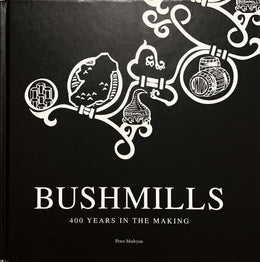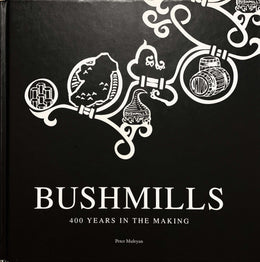
In 1987 Bushmills launched their now world-famous ten-year-old single malt, but it was one of the few innovations that Irish Distillers had pioneered. The company was still hopelessly dependent on domestic sales; foreign markets were as elusive as ever and Seagram weren't getting the kind of returns they had expected.
It was no surprise when in May 1988 some of the largest players in the drinks business joined forces in an attempt to take over Irish Distillers. The GC&C consortium, so- called because the main players were Gilbey's (owners of Baileys), and soft drink company Cantrell & Cochrane (part owned by Guinness Ireland). Between them their parent companies owned eighteen of the world's Top 100 spirit brands. The consortium didn't pull its punches, saying that Irish Distillers' sales record was "a bloody embarrassment". Gilbey's went so far as to say that if Distillers had invented Baileys they wouldn't have known what to do with it. Their ambition was clear; `Bushmills and Jameson should join the Top 100', and they clearly felt they were the people to make it happen.

The GC&C consortium wanted to break up Irish Distillers and share out the brands, "thereby ending the monopoly which has existed over the marketing of Irish whiskey since the early 1970s," as they put it. Gilbey's were to take Jameson, Paddy and Cork Dry Gin, while C&C were to own Tullamore Dew, Powers and Old Bushmills.

But Richard Burrows felt the GC&C bid of £3.15 a share undervalued Irish Distillers, so the board rejected the bid and the plan to parcel out the brands. As the takeover battle rumbled on, Burrows was in secret talks with the French company Pernod Ricard.
“I’d known Pernod Ricard for years through Austin Nichols, which is part of the group," said Richard Burrows. Austin Nichols are makers of Wild Turkey Kentucky whiskey and handled many Irish Distillers brands in the United States. "We were finding it difficult to get access to international markets and we were looking for a hook-up. It hadn't worked with Seagram's, and in the face of a hostile bid, Pernod Ricard were making the right noises."
Those 'noises' paid off, when the board of Irish Distillers and indeed the Irish government approved the take-over. The French had control of the Irish whiskey industry and set to work. Given the historic poor international sales, Pernod Ricard knew it would much easier to build a single brand, rather than several. Jameson was chosen over the likes of Powers, Paddy and even Old Bushmills, as Pernod poured their not inconsiderable talents into putting Irish whiskey back on the world stage. The gamble worked and sales of Jameson sales took off across the globe. By 1996 Jameson broke joined the world's top 100 spirits brands and cracked the magic one million cases a year barrier.
However, the success of Jameson came at a cost as Pernod Ricard dumped more and more niche brands, selling the likes of Tullamore Dew and simply dropping minor labels like Hewitts. During the 1990s life in Bushmills went on pretty much as before. More whiskies were laid clown and older expressions were introduced, including a sixteen-year- old Malt in 1996 and a twenty-one-year-old in 2001, but the distillery always played second fiddle to Jameson.


US adverts from the 1980s


US adverts from the 1980s
Written by Peter Mulryan
The text is an excerpt from "Bushmills: 400 Years in the Making" (pp. 126 - 133), written by Peter Mulryan, published 2008 by Appletree Press Ltd.






